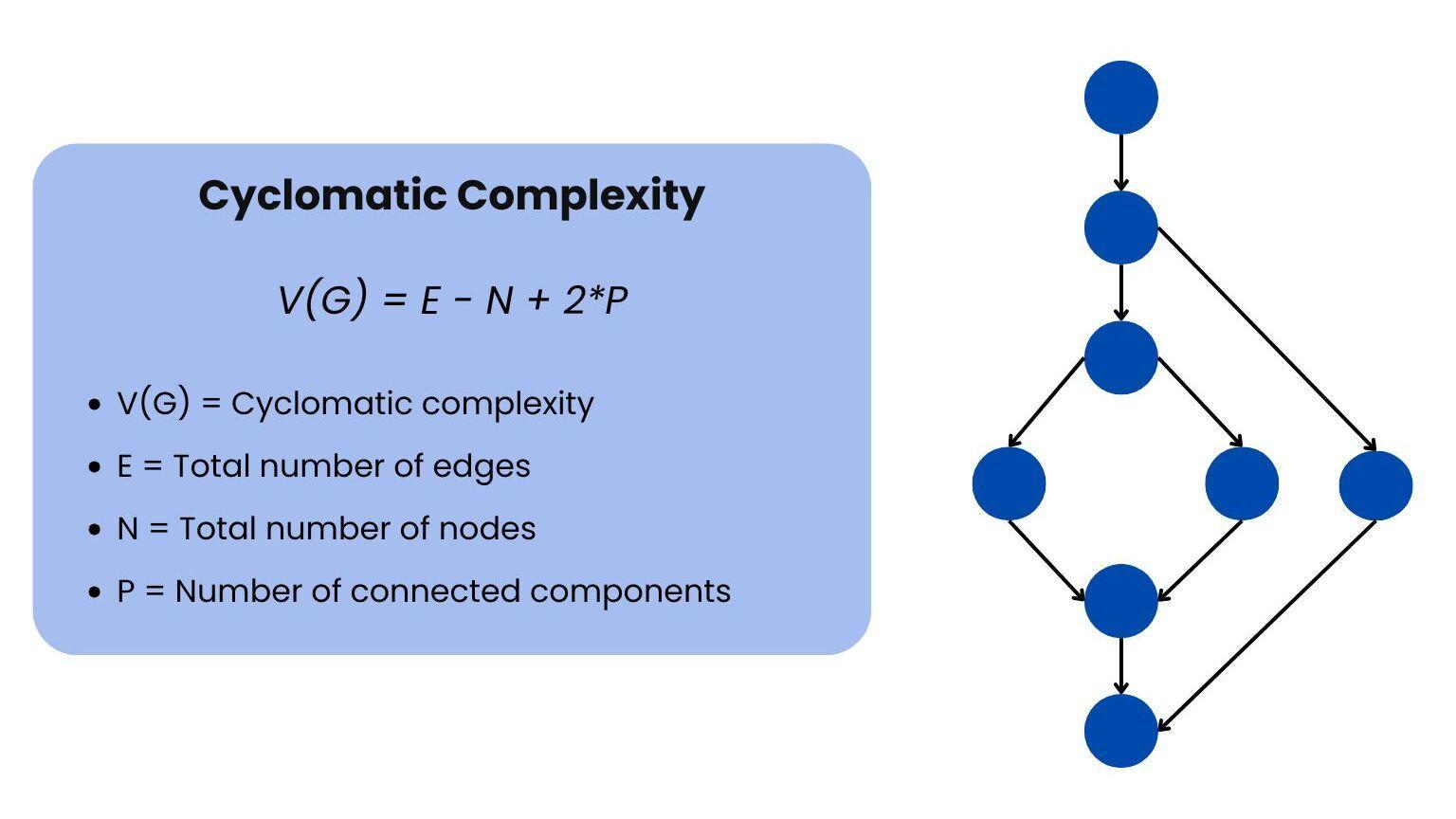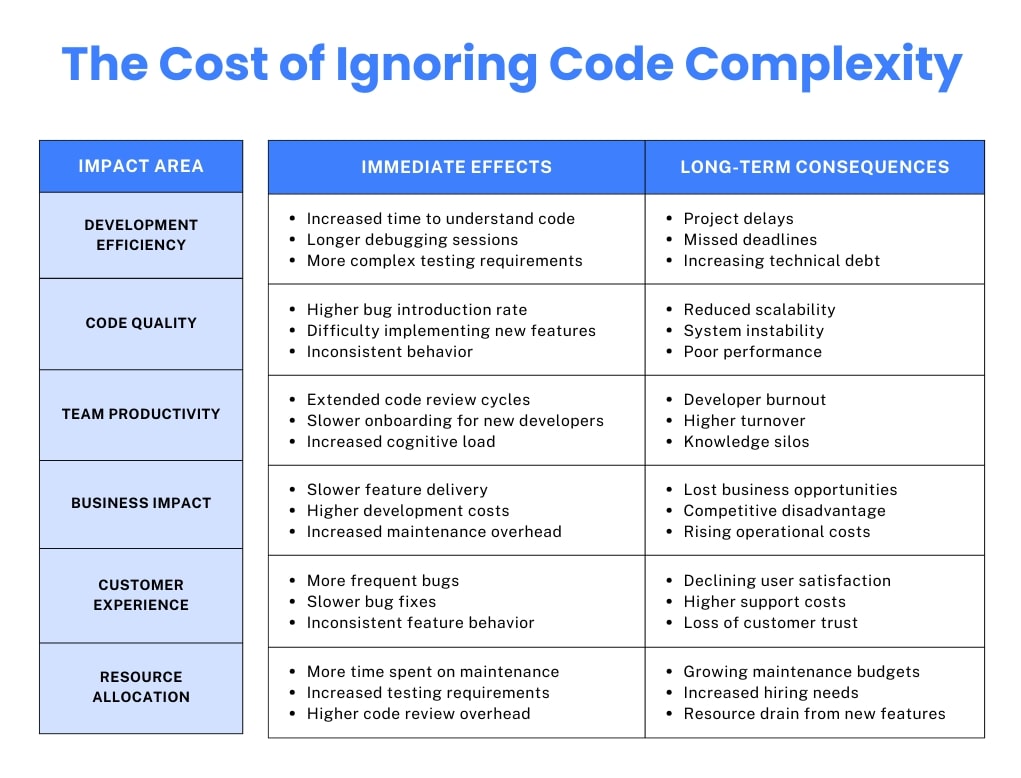Software teams often choose between implementing quick solutions to meet immediate needs or investing time in building robust, lasting solutions. When teams choose speed over sustainability, they incur technical debt. Technical debt occurs in various ways, from outdated dependencies to poor architectural decisions, but complexity-related debt is often the most challenging to address.
The impact of complexity-related technical debt
When code becomes overly complex, it affects multiple aspects of software development:
- Development velocity slows as teams spend more time understanding existing code.
- Bug fixes become increasingly risky and time-consuming.
- Implementing new features requires extensive testing due to unforeseen interactions.
- Documentation becomes outdated more quickly.
- Onboarding new team members takes longer.
The balance of priority
Making decisions about when to address technical debt requires balancing immediate business needs with long-term technical health. This balance involves understanding:
- The current state of your code base.
- Business priorities and deadlines.
- Team capacity and expertise.
- Risk factors associated with complex code.
- The resources available for refactoring efforts.
Understanding code complexity
In software development, code complexity describes how difficult it is for developers to understand and improve current code structures. As architects must examine both individual parts as well as the overall architecture of a structure, they face growing challenges when code comprises several levels of logic and related components. This complexity can manifest in various ways, from deeply nested conditional statements to intricate class hierarchies.
Dimensions of code complexity
Code complexity encompasses several dimensions:
Structural complexity
- Number of control flow paths.
- Depth of nesting.
- Number of conditions and loops.
- Module interdependencies.
Cognitive complexity
- How difficult the code is to understand.
- The time required to comprehend functionality.
- The mental effort needed to modify code safely.
- The learning curve for new team members.
Key code complexity metrics
- Cyclomatic complexity: Determines the number of independent pathways through the code.
- Maintainability index: Indicates how easily the code can be maintained.
- Cohesion and coupling metrics: Highlight the relationships between different components.

The cost of ignoring code complexity
Like an unpaid debt that grows over time, ignoring complex code creates mounting costs across development, team performance, and business results. Here’s a breakdown of how these costs compound in different areas of software development:

When to prioritize code complexity tech debt
Addressing code complexity isn’t always feasible, especially under tight deadlines. However, there are specific indicators and moments when tackling this tech debt should become a priority.
Key indicators:
- Declining maintainability metrics: Tools like SonarQube or CodeClimate report increasing complexity.
- Frequent bugs: Repeated issues in the same part of the codebase signal underlying complexity.
- Long debugging times: Excessive time spent understanding code before implementing fixes.
Critical moments:
- Before major releases: Complex code can introduce critical issues during launches.
- When scaling the team: New developers struggle to onboard due to unclear or convoluted code.
- After sprint retrospectives: Patterns of inefficiency or failure point to complexity as a root cause.
Steps to address code complexity
Here are the steps you should follow to address code complexity issues:
Step 1: Perform a code complexity analysis
Utilize tools and techniques to identify problem areas in the codebase:
- Static analysis tools: SonarQube, CodeClimate, and ESLint are used to pinpoint complex hotspots.
- Code reviews: Peer reviews to highlight parts of the code that are unnecessarily complicated.
Step 2: Prioritize refactoring efforts
Focus on high-impact areas where complexity has the most significant effect on engineering productivity:
- Frequently modified code: Simplify modules that are often changed or extended.
- Critical components: Refactor code tied to key features or business logic.
Step 3: adopt best practices
- Enforce coding standards: Consistent conventions reduce the risk of complexity.
- Regular code reviews: Catch complexity early by involving peers.
- Automated testing: Ensure changes don’t introduce new issues.
Conclusion
Technical debt related to code complexity is a silent productivity killer. By monitoring complexity metrics, recognizing key indicators, and strategically addressing problematic areas, teams can avoid the long-term costs of poor code quality. While not every instance of complexity warrants immediate attention, prioritizing it during critical moments can ensure a more sustainable and efficient development process.


